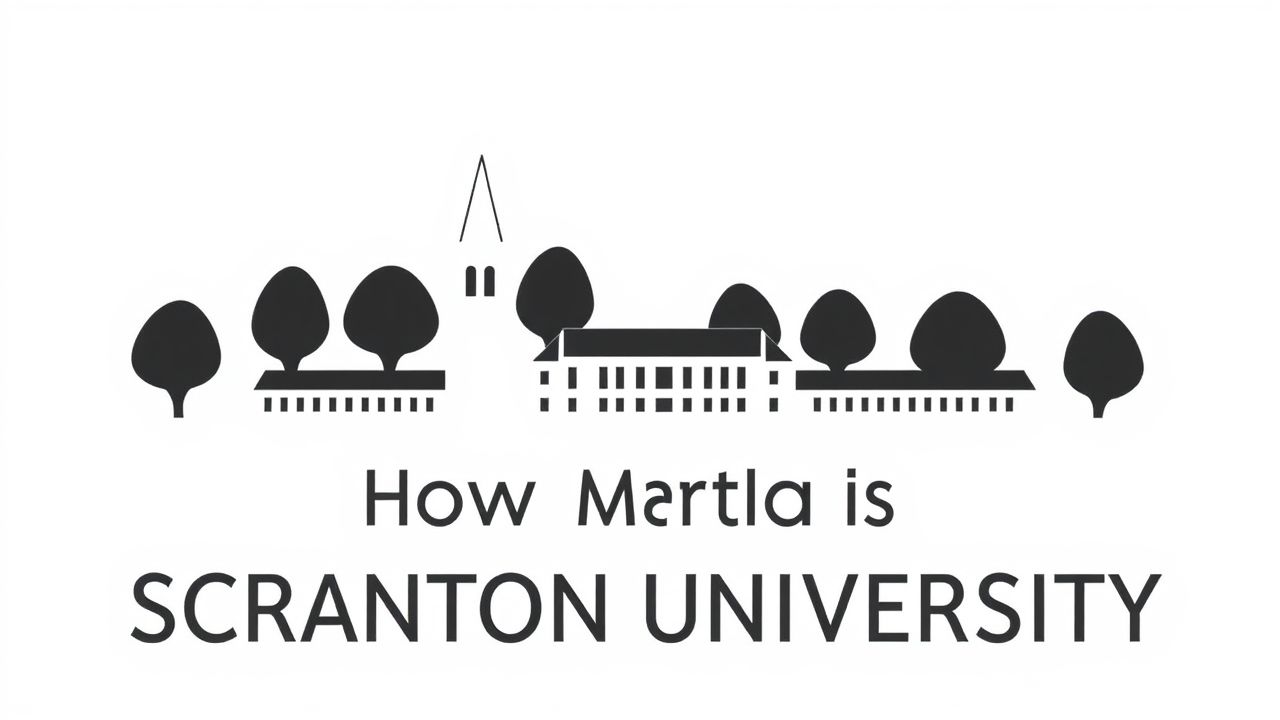Choosing a university often comes down to more than just academics it also involves a close look at the overall cost. The University of Scranton, a private Jesuit university located in Pennsylvania, offers a solid education rooted in liberal arts and professional studies. However, many prospective students and families ask the important question: how much is Scranton University? Understanding the full range of expenses associated with attending this university is critical when planning for higher education. From tuition and fees to room, board, and additional costs, there are several components that contribute to the total cost of attendance.
Tuition Costs at the University of Scranton
Undergraduate Tuition
For undergraduate students, tuition at the University of Scranton is billed on an annual basis. For the current academic year, full-time undergraduate tuition is approximately$52,134 per year. This figure applies to students enrolled in 12 to 18 credit hours per semester. If a student takes more than 18 credits, additional charges may apply per credit hour.
Part-Time and Per Credit Rates
For students taking fewer than 12 credits per semester (classified as part-time), the tuition is charged on a per-credit-hour basis. The per-credit cost is typically around$1,738. This is especially relevant for students pursuing evening courses, online classes, or part-time programs.
Mandatory Fees and Additional Charges
General University Fees
On top of tuition, students are responsible for a range of mandatory fees. These typically include:
- General Fee: Approximately $400 per semester, covering campus services and student activities.
- Technology Fee: Around $200 per semester, which supports digital resources and technology infrastructure.
- Health and Wellness Fee: About $150 per semester, providing access to campus health services.
In total, students should budget between$1,200 and $1,500 annuallyfor mandatory fees in addition to tuition.
Course-Specific Fees
Some programs or classes may include extra charges for lab equipment, art supplies, or field trips. These can vary widely by major but might add an additional$200 to $1,000 per year.
Room and Board Costs
On-Campus Housing
Living on campus is a significant portion of a student’s budget. The University of Scranton offers several residence halls, apartments, and suite-style accommodations. The cost for on-campus housing ranges from$9,000 to $12,000 per academic year, depending on the type of housing selected.
Meal Plans
Students living on campus are typically required to purchase a meal plan. The university offers various meal plan options, with costs ranging from$4,800 to $6,000 per year. These plans are designed to meet different eating habits, from unlimited access to dining halls to block meal plans with declining balances.
Books, Supplies, and Personal Expenses
Textbooks and Course Materials
Like at most universities, students must purchase their own textbooks and other course-related materials. The average student at Scranton can expect to spend around$1,200 to $1,500 per yearon books and supplies.
Personal Expenses and Transportation
Additional costs for things like laundry, toiletries, entertainment, and transportation should also be factored into a student’s budget. These costs will vary by student, but most financial aid estimations suggest budgeting at least$2,000 to $3,000 annuallyfor personal and travel expenses.
Total Estimated Cost of Attendance
Summary of Annual Costs
When adding all necessary expenses together, the total annual cost of attending the University of Scranton as a full-time, on-campus undergraduate student is approximately:
- Tuition: $52,134
- Fees: $1,200 – $1,500
- Room and Board: $13,000 – $18,000
- Books and Supplies: $1,200 – $1,500
- Personal Expenses: $2,000 – $3,000
Total Estimated Annual Cost: $69,000 to $76,000
This total represents the full cost before any scholarships, grants, or financial aid are applied.
Graduate and Online Program Costs
Graduate Tuition
Tuition for graduate programs at the University of Scranton is calculated per credit hour. Depending on the program, rates typically range between$965 and $1,150 per credit. A full-time graduate student taking 9 credit hours per semester may pay between$17,370 and $20,700 per year, excluding additional fees and materials.
Online Programs
The university also offers a variety of online undergraduate and graduate degrees. Online tuition is often slightly different and may range from$500 to $1,000 per credit hour, depending on the course and degree level.
Financial Aid and Scholarships
Merit-Based Scholarships
To help reduce the financial burden, the University of Scranton offers merit-based scholarships to incoming freshmen based on academic achievement. Awards typically range from$10,000 to $30,000 annuallyand are renewable for four years, provided the student maintains academic requirements.
Need-Based Aid
Students can also apply for federal financial aid through FAFSA, as well as institutional grants. The university uses this information to award need-based aid, which may include grants, loans, and work-study opportunities.
Scholarship Opportunities for Transfer and Graduate Students
Transfer students and graduate applicants may also qualify for scholarships and assistantships, although availability and amounts vary. Many graduate departments offer tuition discounts for assistantships or on-campus jobs related to a student’s area of study.
Is Scranton University Worth the Cost?
Value of a Jesuit Education
The University of Scranton emphasizes ethics, service, and leadership, making it a well-rounded institution for students seeking personal and professional development. The high level of academic support, small class sizes, and engaged faculty all contribute to the value of education provided.
Career Outcomes
Scranton has a strong reputation for producing graduates who go on to succeed in a wide range of industries. Many students find employment or pursue graduate studies soon after completing their degree, which can help justify the initial financial investment.
The cost of attending the University of Scranton is comparable to other private universities in the United States. While the total price tag may seem high, the availability of scholarships and financial aid can significantly reduce what students actually pay. Anyone considering this university should take the time to explore aid options, calculate net costs, and weigh the academic and career benefits that come from attending a respected institution like Scranton. With the right planning, a degree from Scranton University can be an investment with long-term rewards.
